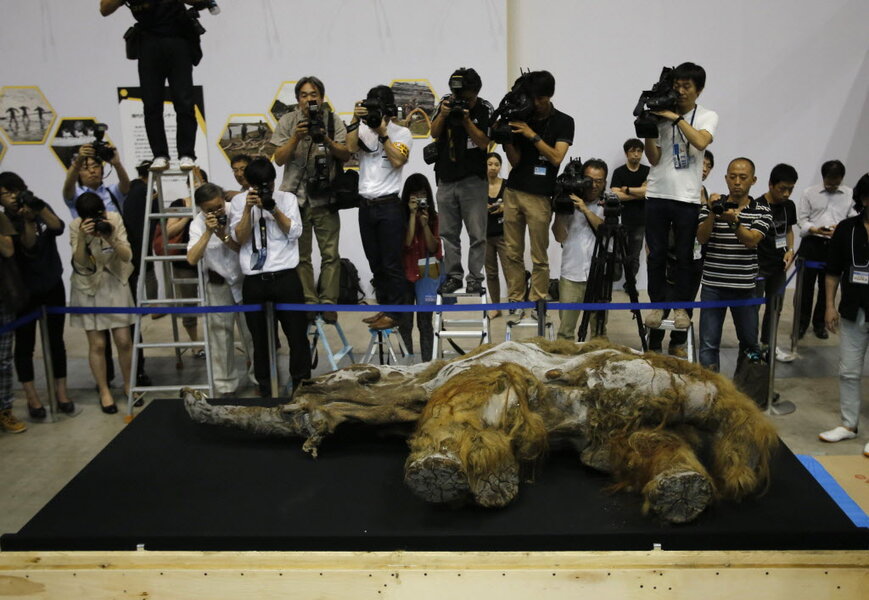Woolly mammoth goes on view in Japan
Loading...
An ancient baby mammoth – so well preserved that tuffs of orange-brown hair still dot its body – has gone on display in Yokohama, Japan.
While fossilized mammoth teeth, bones, and tusks are relatively common, mammoths with hair and soft tissue are highly unusual finds. This mammoth, a two-year-old called Yuka that died some 39,000 years ago, is swathed in light orange, almost blonde hair, as well as lingering soft tissue.
The mammoth, recovered from Siberia's ice about three years ago, is also notable for what it might teach us about human life those many thousands of years ago. Cuts found on the animal’s body suggest that humans took the carcass from the lion that likely originally killed it. That makes it one of few carcasses found to show human contact and could offer up clues as to how ancient humans hunted.
“It’s exceptionally rare to find intact mammoths,” Kevin Campbell, an associate professor of environmental and evolutionary physiology at the University of Manitoba, told the Monitor. “And to find a mammoth that has been conclusively found to have been butchered by humans makes this find exceedingly unusual."
He noted, though, that such discoveries are becoming more common as the climate warms and as melting ice reveals its hidden cargo.
Much is still unknown about the woolly mammoth, which went extinct some 4,000 years ago. Among those unknowns is how the mammoth adapted to the severe cold of Siberia. Mammoth skeletons checkering the globe suggest that the species migrated from Africa to southern Europe and China about 3 million years ago. The mammoths in China then moved northward to Siberia about two million years ago.
That means that the mammoth, whose closest living relative is the Asian elephant, and who was once native to sweltering Africa, somehow evolved to have extreme heat-conservation mechanisms. What we know as the woolly mammoth, with its thick layer of fat and fur, and its small tail and ears, did not exist until about half a million years ago.
“We don’t understand at all on a biochemical level how they were able to survive in the arctic,” said Dr. Campbell.
Since the physiological record of how the animal managed to survive in Siberia is not generally preserved in bones, mammoths with remaining soft tissue are of particular interest to scientists for what that preserved tissue might reveal about how the animal's various internal systems adapted to the cold.
The mammoth will be on view in Japan from July 13th to September 16th.








